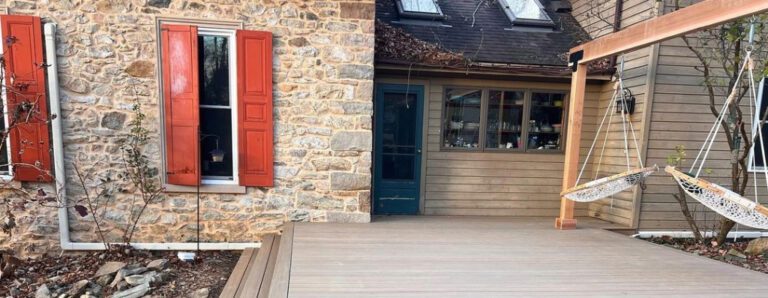1. Anchor with Accuracy
Securely anchoring your wood post bases into the concrete slab is the first step toward building a safe pergola. Unlike cast-in-place anchors, which are placed in wet concrete and thus difficult to adjust once the substrate has set, anchor bolts allow for more accurate placement. You can measure, mark and adjust where the anchors will be set on the surface of the finished slab, ensuring a square footprint.
2. Do Away with Dust
Using a hammer drill to drill holes for anchor bolts creates a lot of concrete dust. As you may know, dust on the materials can prevent anchoring adhesives, like AT-XP®, from reliably bonding the threaded rod to the concrete. Exposure to silica dust also presents health hazards. In order to make sure the holes are completely clean, the industry “4-4-4” method is required. Using a long nozzle, blow compressed air into the hole for four seconds, brush out the hole with four strokes followed by another four seconds of compressed air. Or use the Simpson Strong-Tie® Speed Clean DXS dust extraction system, which vacuums dust even as it drills clean, precise holes for adhesive anchor installation.
A quick tip for making sure your adhesive is properly mixed: squirt some onto a piece of scrap cardboard until you see an even, consistent color. Then it’s ready for use.
3. Stay Square, Pursue Plumb
While using anchor bolts instead of cast-in-place anchors helps you achieve greater placement accuracy, our Outdoor Accents® adjustable post bases offer an additional level of precision. The innovative slotted hole in the bottom of the base allows you to move the piece around and adjust it into position.
This post base’s 1″standoff plate will keep the post itself raised above the concrete. This keeps it out of standing water — avoiding rot and giving your pergola a longer life.
Also, using a post level when erecting your post lets you check the alignment of multiple planes at once so your post will be level and plumb.
If you’re using Outdoor Accents hex-head washers and structural wood screws to attach your posts to your post bases, installation is fast because it isn’t necessary to predrill. And holes in the post base are offset, so there’s no need to worry about hitting anything when driving screws from the opposite side.
4. Brace for Success
Although our post bases do make for easier placement, it’s important to note that post bases alone don’t provide adequate resistance to prevent posts from rotating about the base. Adding knee bracing between the posts and beams, similar to what is shown in the image above, will help to laterally stabilize your pergola.
5. Counter Corrosion
To ensure the pergola you build will be enjoyed for many years to come, use corrosion-resistant hardware for all your connections. Ideally, wood should be pressure treated, should be manually coated with a preservative, or possess natural tannins that act as a preservative — like western red cedar, for example.
All connectors and fasteners in our Outdoor Accents decorative hardware line are galvanized and black-powder coated for corrosion resistance. Visit our Corrosion Risks page for more information.
Hopefully this handful of pointers will make your next custom pergola build easier, stronger and safer.


